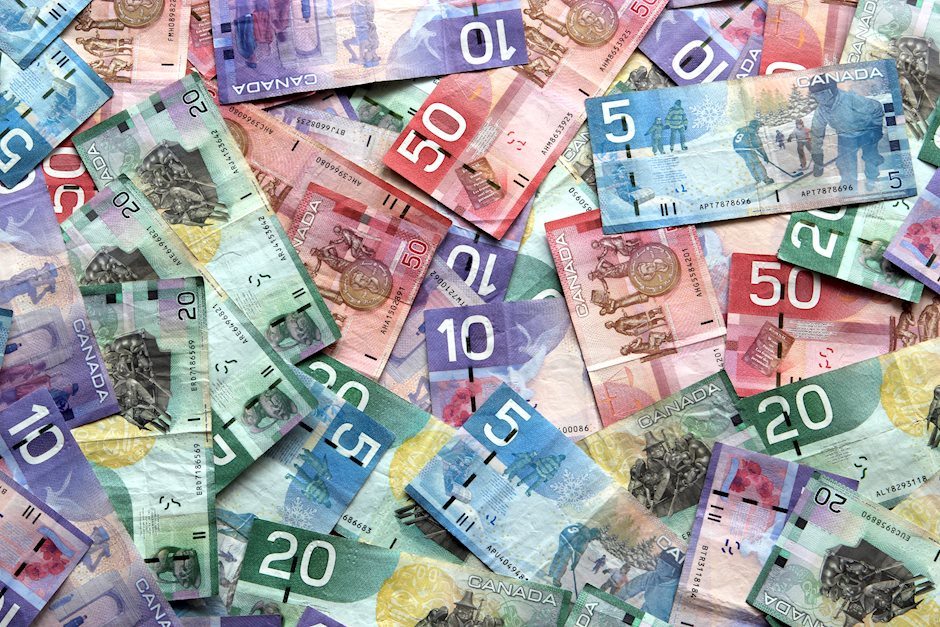USD/CAD remains on the defensive below 1.3650 on weaker US data, softer US Dollar
- USD/CAD remains under selling pressure near 1.3640 in Thursday’s early Asian session.
- The US service sector fell into contraction territory in June.
- Higher crude oil prices continue to support the commodity-linked Loonie.

The USD/CAD pair trades on a softer note around 1.3640 during the early Asian session on Thursday. The softer Greenback after the weaker-than-expected US Services Purchasing Managers Index (PMI) for June has dragged the pair lower. Meanwhile, the USD Index (DXY) accelerates its decline to 105.30 and US yields decline across the board amid the Independence Day holiday on Thursday.
Business activity in the US service sector fell into contraction territory in June. The US ISM Services PMI dropped to 48.8 in June from 53.8 in May, missing the market expectation of 52.5 by a wide margin. In response to the weaker data, the US Dollar (USD) attracts some sellers broadly.
According to the Federal Open Market Committee (FOMC) meeting on June 11–12, Federal Reserve (Fed) officials emphasized the data-dependent approach and refrained from committing to interest rate cuts until further observation. Additionally, some policymakers noted the importance of patience before considering rate cuts, while several others stated that it’s necessary to hike again if inflation were to rebound.
On the Loonie front, the rise of crude oil prices continues to underpin the commodity-linked Canadian Dollar (CAD), as Canada is the major crude oil exporter to the United States. On the downside, manufacturing activity in Canada remained weak in June, with the Canadian S&P Global Manufacturing PMI standing at 49.3 in June. This figure came in weaker than the market estimation of 50.2, the 14th straight month of contraction, and the longest run in records dating back to October 2010.
Canadian Dollar FAQs
The key factors driving the Canadian Dollar (CAD) are the level of interest rates set by the Bank of Canada (BoC), the price of Oil, Canada’s largest export, the health of its economy, inflation and the Trade Balance, which is the difference between the value of Canada’s exports versus its imports. Other factors include market sentiment – whether investors are taking on more risky assets (risk-on) or seeking safe-havens (risk-off) – with risk-on being CAD-positive. As its largest trading partner, the health of the US economy is also a key factor influencing the Canadian Dollar.
The Bank of Canada (BoC) has a significant influence on the Canadian Dollar by setting the level of interest rates that banks can lend to one another. This influences the level of interest rates for everyone. The main goal of the BoC is to maintain inflation at 1-3% by adjusting interest rates up or down. Relatively higher interest rates tend to be positive for the CAD. The Bank of Canada can also use quantitative easing and tightening to influence credit conditions, with the former CAD-negative and the latter CAD-positive.
The price of Oil is a key factor impacting the value of the Canadian Dollar. Petroleum is Canada’s biggest export, so Oil price tends to have an immediate impact on the CAD value. Generally, if Oil price rises CAD also goes up, as aggregate demand for the currency increases. The opposite is the case if the price of Oil falls. Higher Oil prices also tend to result in a greater likelihood of a positive Trade Balance, which is also supportive of the CAD.
While inflation had always traditionally been thought of as a negative factor for a currency since it lowers the value of money, the opposite has actually been the case in modern times with the relaxation of cross-border capital controls. Higher inflation tends to lead central banks to put up interest rates which attracts more capital inflows from global investors seeking a lucrative place to keep their money. This increases demand for the local currency, which in Canada’s case is the Canadian Dollar.
Macroeconomic data releases gauge the health of the economy and can have an impact on the Canadian Dollar. Indicators such as GDP, Manufacturing and Services PMIs, employment, and consumer sentiment surveys can all influence the direction of the CAD. A strong economy is good for the Canadian Dollar. Not only does it attract more foreign investment but it may encourage the Bank of Canada to put up interest rates, leading to a stronger currency. If economic data is weak, however, the CAD is likely to fall.
Author

Lallalit Srijandorn
FXStreet
Lallalit Srijandorn is a Parisian at heart. She has lived in France since 2019 and now becomes a digital entrepreneur based in Paris and Bangkok.
















